Original | Odaily Planet Daily ( @OdailyChina )
Author: Wenser ( @wenser 2010 )

Recently, Huma.Finance, which focuses on the concept of PayFi Network Protocol, has attracted much attention from the market due to the debate between team members and KOLs, and even once again sparked a heated discussion on the topic of Is academic qualifications important in the crypto field? Combined with its Huma 2.0 system launched on the Solana network on April 10 and the tariff trade war launched by the Trump administration, the PayFi track has become popular again.
In view of this, Odaily Planet Daily will briefly introduce Huma in this article and discuss whether it has the risk of collapse of previous P2P projects.
A First Look at Huma: The Rising Star of Solana’s PayFi Ecosystem
It is worth mentioning that Huma is not a native project of the Solana ecosystem, but was expanded from the Ethereum ecosystem to the Solana network in November last year.
In February 2023, Huma completed a financing of US$8.3 million , led by Race Capital and Distributed Global, with participation from ParaFi, Circle Ventures, Robot Ventures, etc. At that time, its project was positioned as a DeFi lending protocol.
In September 2024, following the completion of its merger with cross-border payment platform Arf in April, Huma announced the completion of a $38 million financing (including $10 million equity investment and $28 million income-based RWA), led by first-round investor Distributed Global, with participation from Hashkey Capital, Folius Ventures, Stellar Development Foundation, and TIBAS Ventures, the venture capital arm of Turkeys largest private bank İşbank. At that time, its project was positioned as an RWA platform.
It was not until the completion of the ecosystem expansion in November that Huma officially positioned the project as the first PayFi network.

Huma official website interface
According to official data from the Huma platform, its total transaction volume currently exceeds $3.9 billion, with a total income of approximately $3.2 million, and the number of platform points Feather earned is approximately 21.54 million; active liquid assets are approximately $74.769 million, PayFi assets are approximately $67.547 million; and liquid assets are approximately $7.217 million. According to Dune data , the average annualized rate of return on the Huma platform is approximately 14.3%, even higher than the 10.5% stable rate of return data given on the official website; the number of depositors is approximately 15,000.
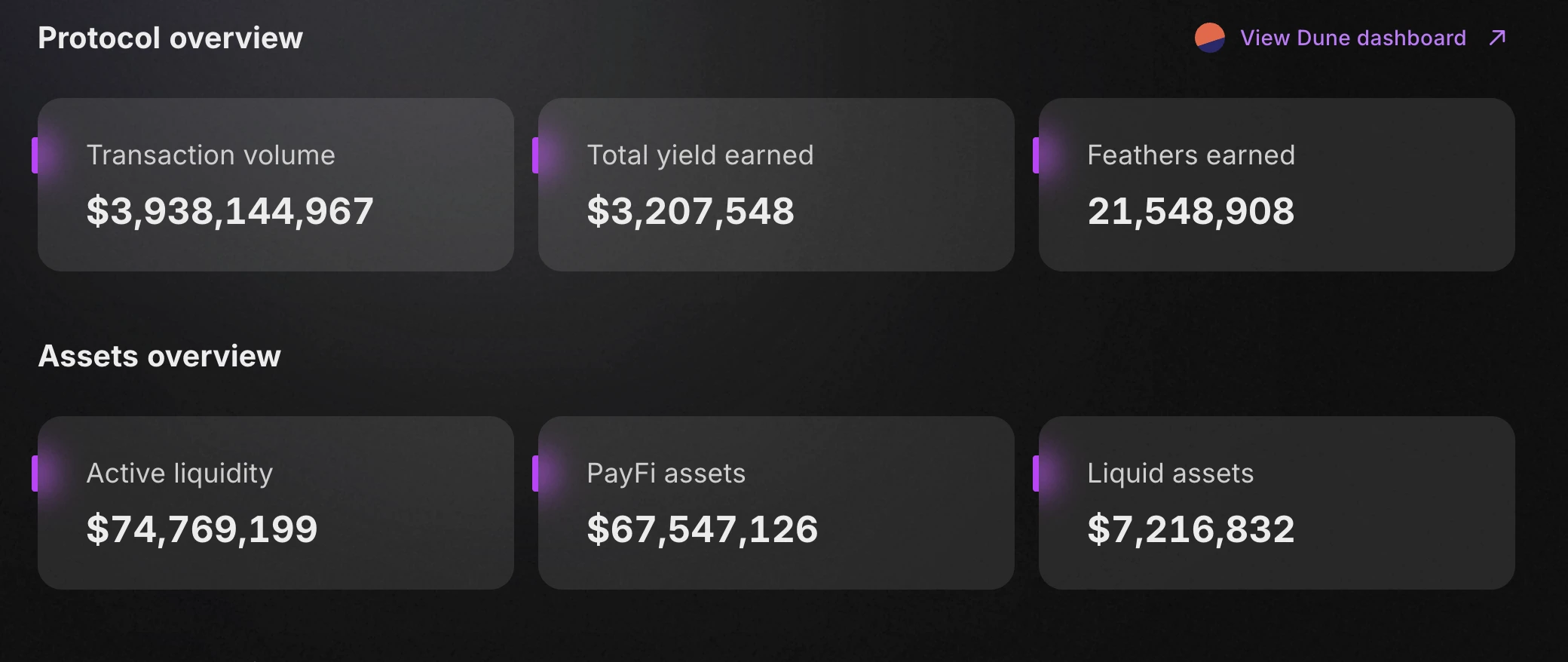
https://app.huma.finance/dataRoom
In addition, regarding the annualized income that users are most concerned about, according to Dune data, Humas platform annualized income has been gradually increasing since October last year, and the annualized income will reach 8.536 million US dollars in March 2025. Huma 2.0, which has been online for less than a week, has accumulated deposits of more than 12.21 million US dollars.
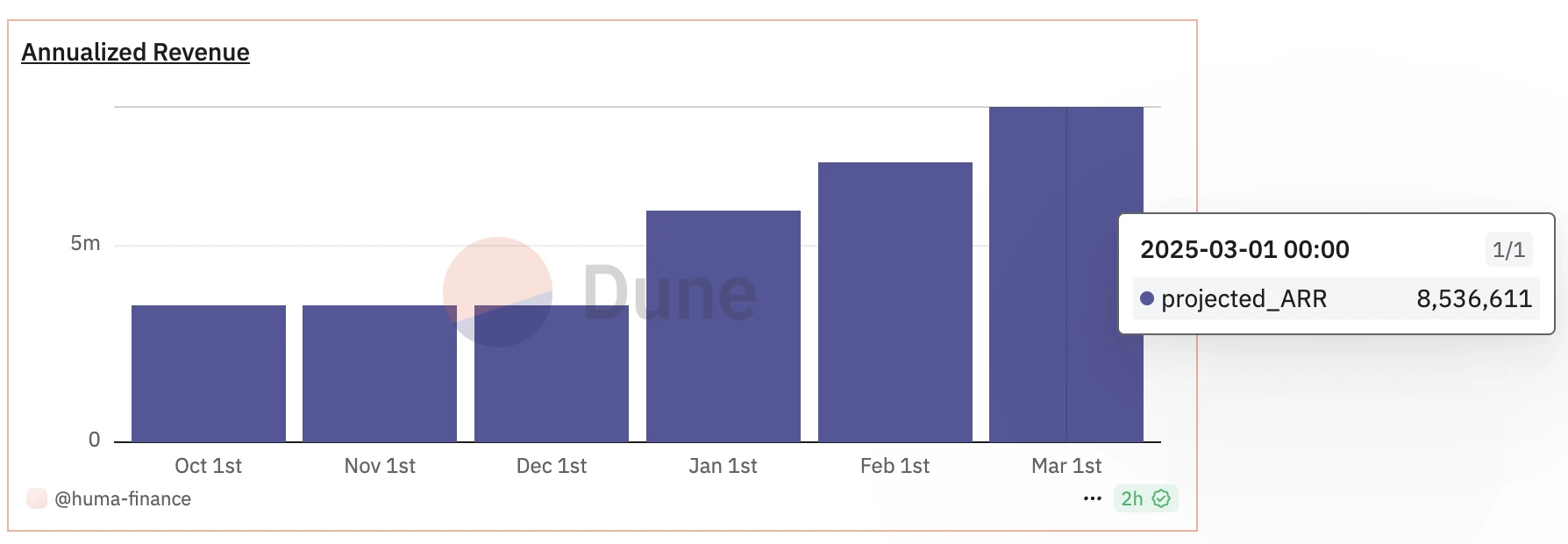
According to previous media reports , Huma uses blockchain technology to provide payment financing (or on-demand liquidity) for use cases such as remittances, digital asset-backed credit cards, trade financing, T+0 solutions for global payments, and DePIN financing, and is committed to solving the inefficiency problems in the traditional financial system. This business is mainly conducted through Arf. As of April 15, Arfs cumulative credit line was US$1.992 billion; the cumulative repayment amount was approximately US$1.95 billion; and the capital turnover multiple was approximately 4.31 times.
According to official institutional information , Huma is mainly used for cross-border payment financing activities. There are currently three liquidity pools, all of which are full and have a yield of more than 11.5%.
In terms of DePIN financing, Huma has previously jointly launched the Roam router loan purchase plan with Roam. Users pay a down payment of 30%, and the remaining funds are provided by Huma. Users will repay the loan through subsequent airdrops and mining rewards. After the loan is settled, the equipment income belongs to the user.
In January 2025, according to third-party sources , Huma will launch the HUMA token on the Jupiter LFG Launchpad, with the expected voting release time being May.
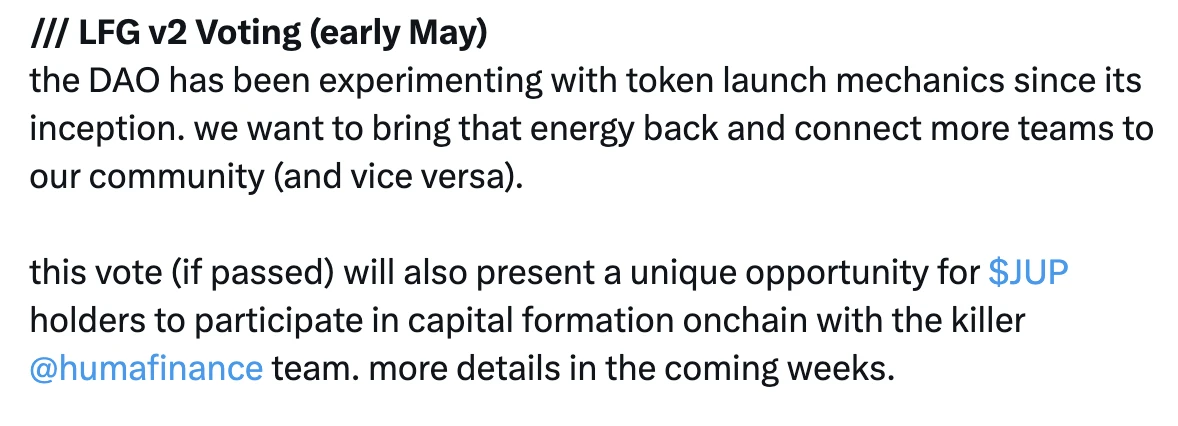
The tentative voting date is May
After introducing the project, for ordinary users, the current way to participate is to earn platform yield returns and Feather points rewards through deposits. If you want to maximize the latter, you can choose the Maxi mode in Huma 2.0; if you want to take both into account, you can choose the Classic mode. The invitation link is here .
What more people are concerned about is whether Huma has the risk of collapse of traditional Internet P2P projects?
Is Huma at risk of P2P crash? Yes, but not completely
According to the PayFi Strategy Memorandum document provided by Huma, Huma proactively disclosed a series of risk factors, including:
credit and default risk;
PayFi product liquidity risk;
risks of fraud and misrepresentation;
Concentration risk;
Guarantee execution risk;
Pre-financing execution risk;
regulatory and legal risks;
macroeconomic and market risks;
As well as related risks at the companys operations, technology and blockchain levels.
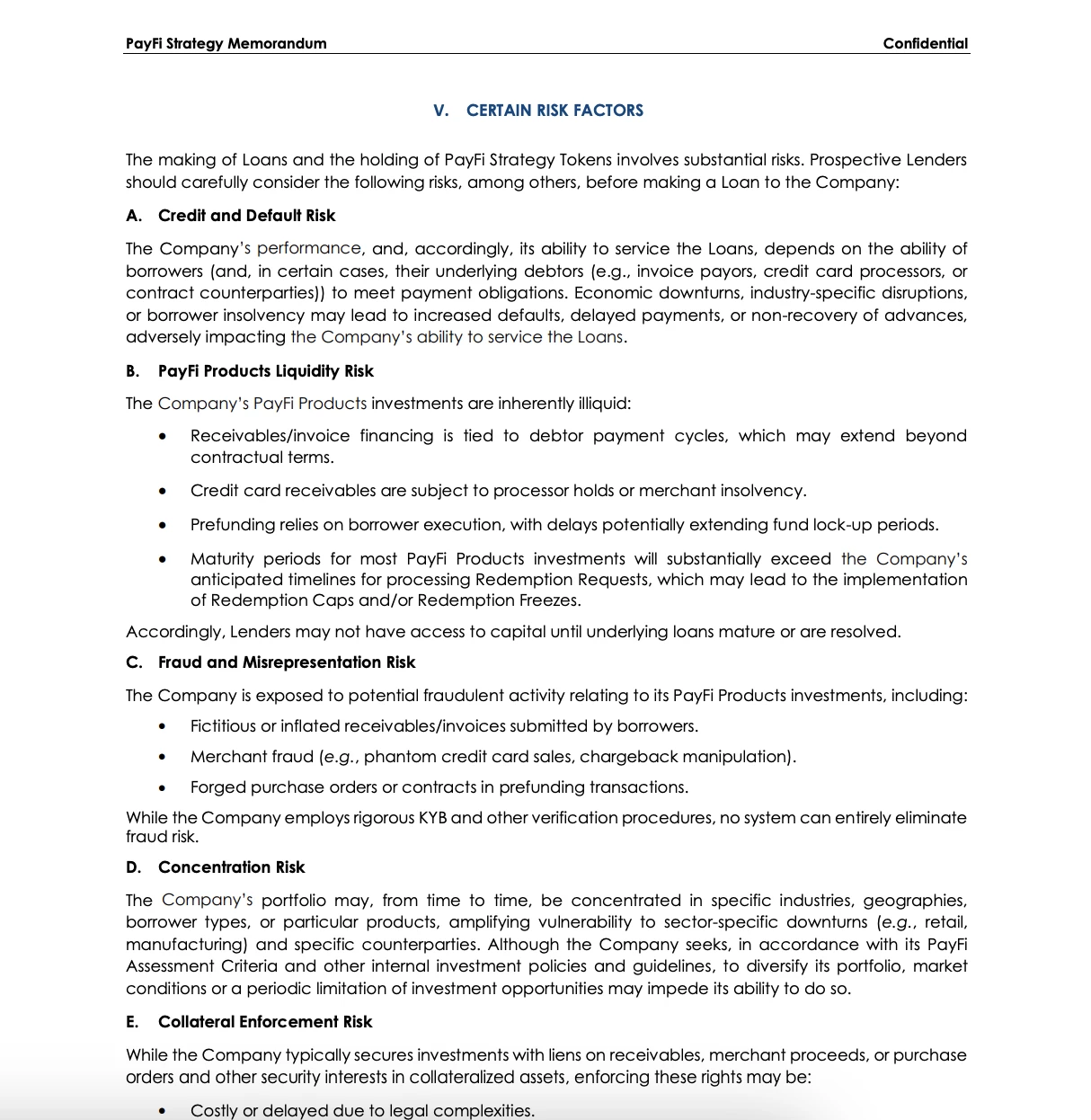
Huma official documentation information
In addition, Huma officials have also made relevant time and amount restrictions on the user redemption process.

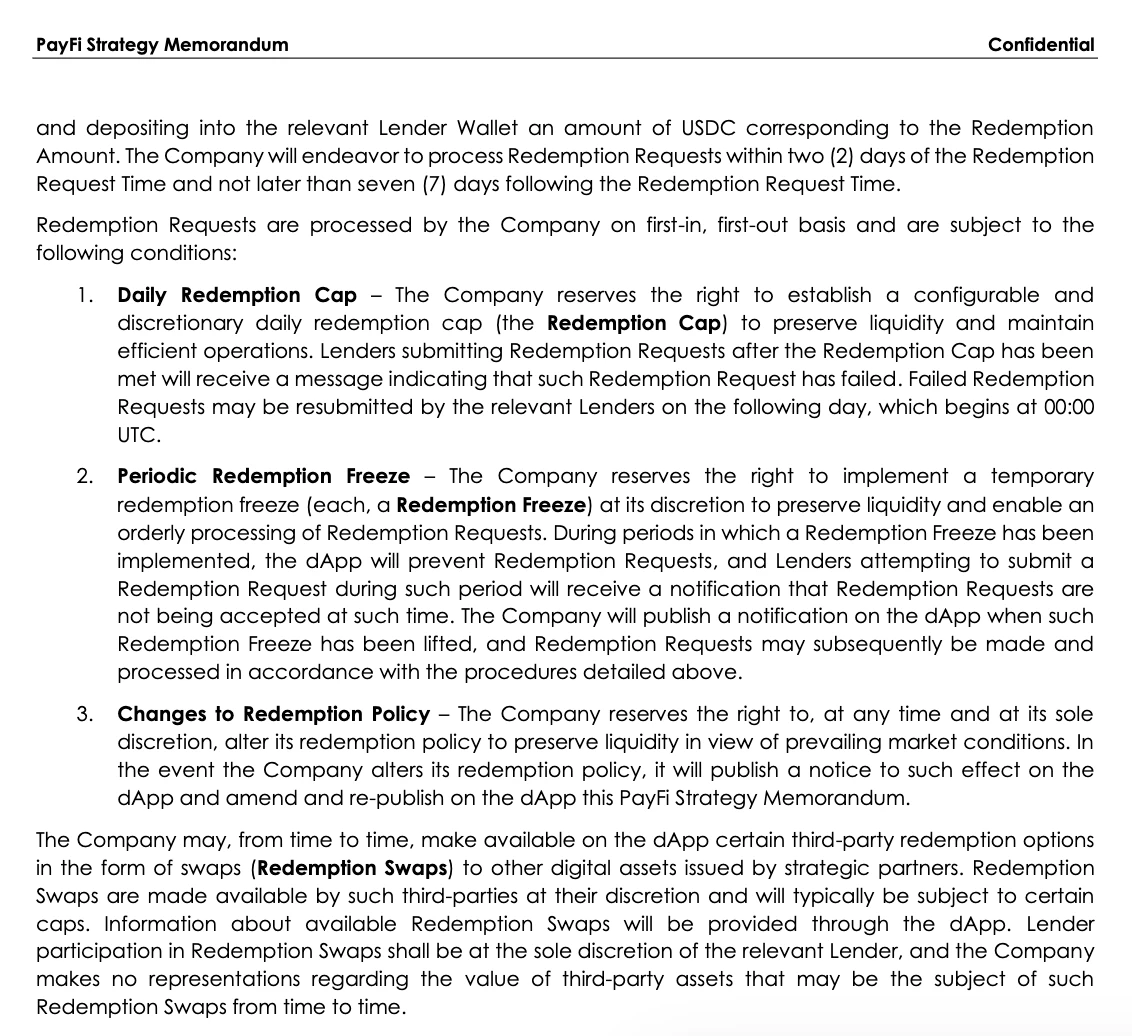
The official attitude towards risks is so clear and specific, is there really a risk of Huma going bankrupt? At present, the possibility is low . The main reasons are as follows:
Judging from the existing business model, Humas business model is more inclined to open up token-incentivized deposit functions to individuals without the need for KYC/KYB on the basis of connecting enterprises and institutional investors and their capital liquidity.
From the perspective of its underlying assets and risk control mechanisms, Huma uses RWA assets (such as cash-collateralized bonds issued by Arf Capital) rather than high-risk P2P personal unsecured loans for business settlement. The layered structure of the Arf liquidity pool and the platforms mechanism for covering first losses also reduce the default risk of lending funds, and liquidity management is more flexible (the lock-up period is current or 3 months, 6 months).
From the perspective of the specific functions of the platform, Humas PayFi network does have P2P elements, as it mainly connects borrowers and investors through a blockchain network to provide financing based on future income or accounts receivable; but its focus is on payment financing and RWA tokenization, involving institutional capital and complex financial structures (such as SPV tokenization and structured financing), which is quite different from the person-to-person model in traditional P2P lending.
From the perspective of credit endorsement and investment institutions, Huma has received support from a series of well-known investment institutions and financial institutions including Distributed Global and Hashkey, which also reduces the possibility of fraud in the project to a certain extent. It is worth mentioning that Huma has not carried out platform business in some countries and regions (such as China and the United States, which are sensitive areas for encryption).
Therefore, at this stage, Huma is more like a hybrid business model - it has certain P2P business characteristics, but mainly relies on providing cross-border payment financing to obtain real returns, and on this basis, it expands the PayFi territory in the Solana ecosystem and introduces partners such as Jupiter, Kamino, and RateX (the latter two are not yet open) to explore the potential of the DeFi ecosystem.

Subsequently, users should focus on the following points:
Follow the operation of Arf liquidity pool: https://institutional.huma.finance/
Follow the Huma Dune dashboard for liquidity changes: https://dune.com/huma-finance/huma-overview
Pay attention to Huma’s official further explanation on the transparency of revenue sources——Huma co-founder Richard Liu: https://x.com/DrPayFi
In the short term, Huma has achieved a relatively high annualized return and agreement income by relying on a short carry-over cycle and efficient liquidity , and is expected to achieve the goal of US$10 billion in transaction volume this year with the help of Arf, a cross-border payment platform; in the long term, it still depends on whether Huma can obtain stable returns in stablecoin settlement cards, trade financing, DEPIN project financing and RWA asset tokenization.










